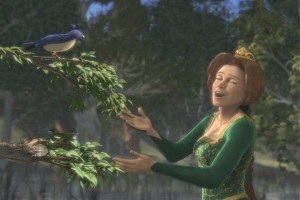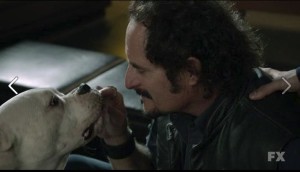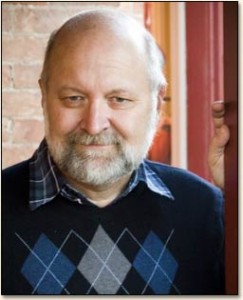Guest Post by Josh Morrey.
 We’ve read in several articles this month that characters are what drive a story. Characters are why we read fiction. Very few people want to read a fictitious science or economics textbook. (Though I’m sure they exist, and someone reads them). For the most part readers require plot and conflict, neither of which we can have without characters to overcome those conflicts or drive that plot.
We’ve read in several articles this month that characters are what drive a story. Characters are why we read fiction. Very few people want to read a fictitious science or economics textbook. (Though I’m sure they exist, and someone reads them). For the most part readers require plot and conflict, neither of which we can have without characters to overcome those conflicts or drive that plot.
But a good story requires more than just a warm body to go through the motions. Characters have to be interesting, intriguing. We don’t want just some Joe Schmoe cardboard cutout to destroy the One Ring and defeat Sauron; we want terrified, tender, Frodo Baggins, smallest of all the heroes, to show his incredible bravery as he faces down an enemy that entire armies couldn’t stop. We want Neo, who absolutely knows he’s not “The One”, to stop running and face down Smith and the other Agents and be The One.
So how do we create interesting characters? This is something I’ve spent a lot of time on recently. See, I’m in the process of developing a space opera web comic in the vein of Howard Taylor’s Schlock Mercenary. It’s about a small, intergalactic shipping company. Part of the developmental process is creating an interesting cast of characters to crew my ship.
One thing I like to see in characters, that I think makes them vastly more interesting, is contradictory traits. Actions or personalities that belie their outer appearance, or challenge their stereotype. For example, one of my main characters is an 8’ tall living rock with the strength and toughness of ten men. So, what’s the stereotype of a character like this? Muscle, enforcer, tough guy, brute.
This character, Argnik, is the best friend and confidant of my main character, Dax, and by all appearances is absolutely Dax’s brawn, like Chewbacca for Han Solo, Little John for Robin Hood, or Fezzik for Inigo Montoya. And these are all great characters. But if I merely make Argnik Dax’s brute force, he loses a little originality and is thereby little less interesting. So how do I change that? First, I made Argnik an accountant. And then I made him a pacifist. Argnik wouldn’t hurt the proverbial fly, and wants nothing more than to lose himself in the endless calculations of shipping manifests and invoices. Now, Dax’s enemies don’t know that, so they, like everyone else, just assume that Argnik is nothing but dumb muscle. An illusion Dax is in no hurry to contradict.
Another way to create interesting characters is internal conflict. As Jace pointed out at the beginning of the month, no character should be all good, or all bad. The world isn’t black and white. It’s full of grays and a myriad colors. Just because someone is makes good choices, doesn’t mean they won’t be tempted to make bad ones, and vice versa. We all make mistakes, some more often, or much larger, than others.
People are complex creatures. Your characters should be as well. Don’t make them the sentient being equivalent of Star Wars planets. Planets in Star Wars tend to have only one biome; the forest moon of Endor, the ice planet of Hoth, the desert planet of Tattooine. Earth, on the other hand, has no fewer than five biomes, and as many as fourteen, depending on who you ask and how they’re classified. And many of those biomes are completely opposite to each other; desert vs jungle, tropic vs arctic. Your characters should have just as many biomes in the form of personality and physical traits, and many of those should be at odds with each other. Those create conflict, which, in turn, makes for more interesting characters.
Think about some of your favorite conflicted or contradictory characters. What deep desires does their exterior façade hide? What inner conflicts do they struggle with? Like the ruffians from the movie Tangled, does your hook-handed thug yearn to be concert pianist?
Maybe he should.
 Guest Writer Bio: Josh Morrey is a writer, artist, gamer, husband, and father, Josh has been writing fiction for nearly ten years. He is a member of the Word Vomit Writers Group, which group blogs at The Writer’s Ramble. Josh has one story published in Issue 2 of Promptly and has earned three Honorable Mentions and a Semi-Finalist in the L. Ron Hubbard’s Writers of the Future contest. He is currently developing a space opera webcomic based on a short story he wrote for NaNoWriMo 2012. It will eventually be seen at www.lostintransitcomic.com. Josh lives in Utah with his amazing wife, two beautiful kids, and two tiny dogs.
Guest Writer Bio: Josh Morrey is a writer, artist, gamer, husband, and father, Josh has been writing fiction for nearly ten years. He is a member of the Word Vomit Writers Group, which group blogs at The Writer’s Ramble. Josh has one story published in Issue 2 of Promptly and has earned three Honorable Mentions and a Semi-Finalist in the L. Ron Hubbard’s Writers of the Future contest. He is currently developing a space opera webcomic based on a short story he wrote for NaNoWriMo 2012. It will eventually be seen at www.lostintransitcomic.com. Josh lives in Utah with his amazing wife, two beautiful kids, and two tiny dogs.






